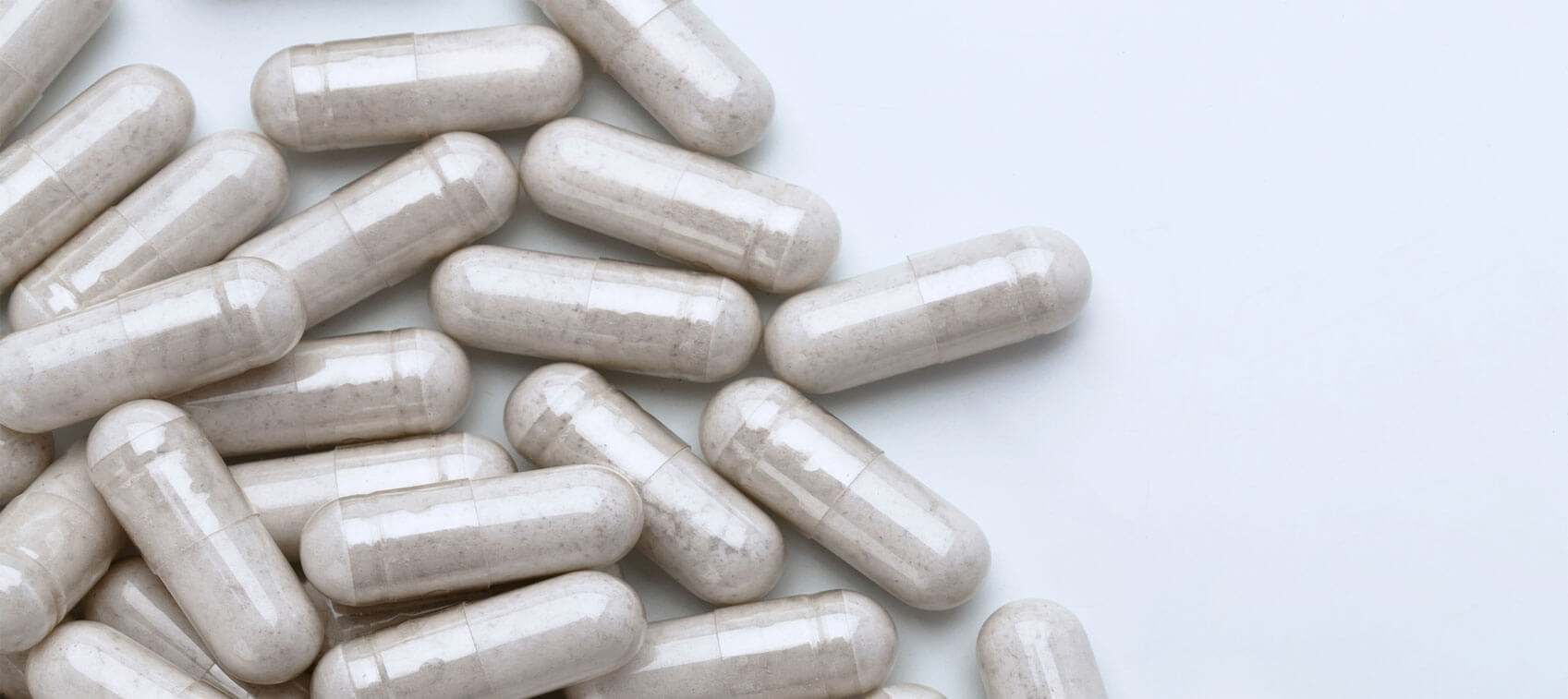
Probiotics are living microorganisms and need food to survive and flourish. The "foods" they consume are known as prebiotics.
For something to be considered a prebiotic, it has to meet three criteria:
- It must not be broken down by stomach acid or enzymes in the body and absorbed into the body;
- It must be able to be fermented by the microflora in the gut; and
- It must be a food source only for the beneficial members of the gut microbial community, and not those that are pathogenic.
For the most part, prebiotics are soluble fiber and non-digestible sugars. (I should say non-digestible by humans...the gut bacteria can digest them.) The two most widely accepted prebiotics are FOS (fructooligosaccharides) and GOS (galactooligosaccharides).
Neither humans nor microorganisms can digest insoluble fiber. It’s mainly found in whole grains and vegetables. It acts like a broom that scrubs the digestive tract, creating a laxative effect. It’s actually an irritant that causes contractions and triggers the release of natural lubricants to move food and waste material through the digestive tract.
Soluble fiber mixes with water and becomes gel-like. It slows down digestion, which gives a feeling of fullness and helps reduce rapid rises in blood sugar and the resulting insulin release. This water-soluble fiber (a form of carbohydrate) moves through the digestive tract until it reaches the good bacteria in the colon. The bacteria ferment and feed on the fiber.
During the fermentation process, soluble fiber is converted to short-chain fatty acids like butyric acid. Butyric acid stimulates more good bacterial growth. It also improves mineral and fat absorption and prevents inflammation, making it extremely helpful in calming conditions like ulcerative colitis and inflammatory bowel disease.
You Don't Need a Prebiotic Supplement
If your diet contains robust amounts of foods that have prebiotics, you don't need a prebiotic supplement. Some of the more advanced probiotic supplements include prebiotics to help keep the bacteria alive and extend the potency, which makes sense. But you don’t need to take separate prebiotic supplement. Our environment provides us with the prebiotics that we need. In fact, it’s been this way since birth.
Within the first four days of life, Bifidobacterium longum begins to colonize in the gut of newborns. As adults, we have hundreds of different species of bacteria in our gut, but Bifidobacterium longum is only found in newborns and is the primary form of beneficial bacteria in the newborn’s gut. This bacteria feeds on a component of breast milk that is indigestible to the baby. It is commonly found in the feces of infants and been shown to coat the lining of the infant’s intestine and protect it from pathogenic bacteria.
When you closely analyze breast milk, it isn’t loaded with extremely high levels of vitamins and minerals, yet a baby is able to survive and thrive on it. Much of this stems from the fact that a baby's gut has only one type of bacterium and it feeds off what would be waste products in the milk (sugars that the baby can’t digest).
Once babies are switched to formula, the type of bacterium in their gut begins to change. The Bifidobacterium longum gets replaced with more adult forms of bacteria. These new forms require increased amounts and different sources of prebiotics. As a result, bowel movements change, and the risk of nutritional deficiencies, allergies, gastrointestinal problems, respiratory infections, and developmental problems increases.
There are a few reasons for this. Newborns grow at an extremely rapid rate, unlike adults. Their nutritional needs are different than an adult’s. Mother’s milk during this time is the perfect diet because it provides the correct amount of fat, carbs, and protein. The initial strain of Bifidobacterium longum is designed to help transform components in breast milk into the necessary fatty acids and other compounds needed for neurological development, hormone formation, and much more.
The adult strains of bacteria that eventually inhabit everyone’s gut are beneficial, but it all has to do with timing. Since a baby’s immune system isn’t as developed as an adult’s, it’s not equipped to deal with an influx of many different strains of new bacteria. It adds extra physiological stress at a critical time in development.
Foods That Have Prebiotics
Most prebiotic supplements are made from grains like oats and corn, which contain soluble fiber. Whole grains, such as brown rice, whole grain breads, whole-wheat pasta, barley, oatmeal, flax, and chia, contain fiber as well. All of these things should be a regular part of a healthy diet.
The same is true of fruits and vegetables. Asparagus, leeks, artichokes, garlic, carrots, peas, beans, onions, chicory, jicama, broccoli, tomatoes, cauliflower, spinach, kale, and chard are all beneficial foods that have prebiotics. (It’s interesting to note that cooking these vegetables doesn’t negatively affect the prebiotic fiber content.) As for fruits, fresh or frozen bananas, cherries, apples, pears, oranges, strawberries, cranberries, kiwi, and berries are good foods that have prebiotics.
Nuts are also a prebiotic source, as are lecithin and the sweetener xylitol.
On the subject of xylitol, some individuals say they can’t use it because it causes gas, bloating, and intestinal discomfort. The same is true for many of the fruits, vegetables, and other foods that have prebiotics. If you’re one of these individuals, there is a solution.
Understand that prebiotics will initially cause excess gas and intestinal problems if the pH of the bowel is abnormal. Excess gas is one of the primary symptoms indicating the need to reestablish the growth of beneficial bacteria in the gut. Probiotics are obviously needed and in most cases will solve the problem. However, if the pH of the colon is abnormal, it can make the probiotics less effective and the gas and abdominal discomfort will continue.
The ideal pH for the colon is slightly acidic, in the 6.7–6.9 range. When there is an imbalance or lack of beneficial bacteria in the colon, the pH is typically more alkaline, around 7.5 or higher. The optimal pH range for gas-producing organisms is slightly alkaline at 7.2–7.3.
When someone starts taking a probiotic or eating foods that have prebiotics, the beneficial microorganisms begin to increase in number. These good bacteria start to ferment more soluble fiber into beneficial products like butyric acid, acetic acid, lactic acid, and propionic acid. These acids provide energy, reduce inflammation, and improve mineral, vitamin, and fat absorption. The extra acid also starts to lower the pH in the colon. As the pH passes through the gas-producing range, some individuals start to experience uncomfortable side effects. If the pH never drops low enough to get out of the gas-producing range, eating that particular food becomes an ongoing problem.
Most of the time, continuing to take quality probiotic supplements will eventually move the pH down to a point where these problems are overcome. In some individuals, though, taking the additional step of using lactic acid yeast wafers can help.
Lactic acid yeast is a modified form of brewer’s yeast that works in your intestines to produce significant amounts of lactic acid. The additional acid stops the growth of harmful bacteria while allowing beneficial bacterial to flourish. It works rather quickly, and when followed up with probiotics, the results can be amazing. I suggest chewing one lactic acid yeast wafer with each meal. In most cases, it will only be needed for five to seven days.
The Bottom Line on Prebiotics
If you eat a healthy diet that includes plenty of foods that have prebiotics, you can ensure that you're providing your gut bacteria what they need to flourish. Rather than invest your money in a prebiotic supplement, put it toward quality probiotic supplement with a variety of probiotic strains and probiotic foods instead. These investments will pay daily dividends for a lifetime.


